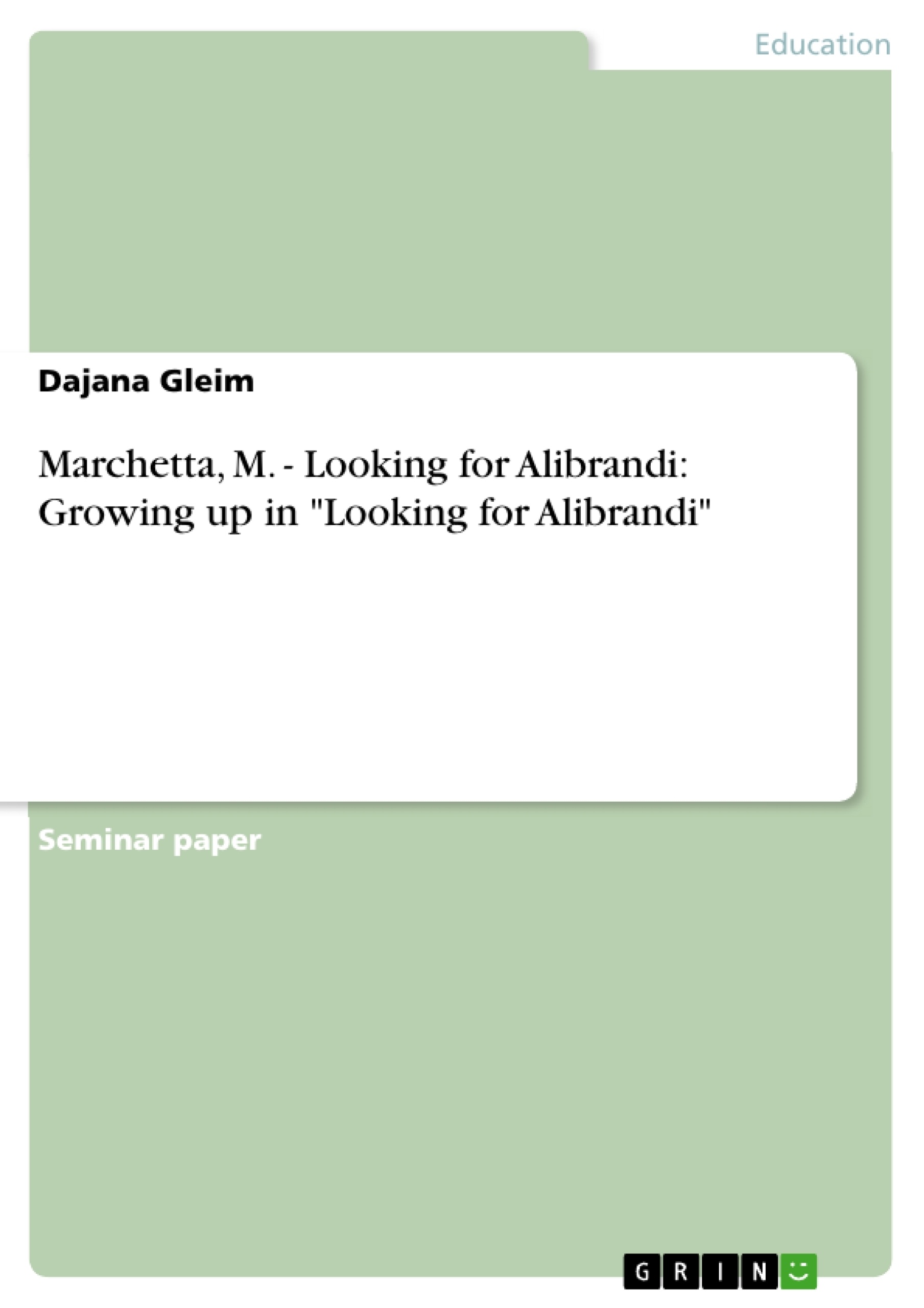The novel Looking for Alibrandi written by Melina Marchetta was first published by Penguin in 1992. By now it has been published in Denmark, Italy, Germany, Spain, Norway and Canada (cf. Tudball & White 1999: 11). It has received numerous prestigious awards, for example, it became “1993 Children’s Book of the Year (for older readers)” and “Multicultural Book of the Year” (cf. Bednarek 2000: 39f.).
The novel points out topical aspects, like multiculturalism, immigration, social differences, but also themes like love, friendship and family life. It is the story of a teenage girl who grows up with an Italian-Australian identity and faces the highs and lows of teenage life.
In an interview (cf. Scan 1993: 1), Melina Marchetta talked about her reasons for writing for young adults and said that she “finds this group fascinating, identifies strongly with it and likes the stage teenagers are at of being so open to change and growth, so vulnerable yet so exuberant”. She thinks that she is very similar to them in tastes. For this reason, she is able to write about teenagers with truth and in the language they really use. Another point is that she is a young author, she was born in 1965. Consequently, she is not much older than the teenagers she describes.
The essential concern Melina Marchetta persues in her writing is “growth through the interaction of characters”. The novel Looking for Alibrandi reveals her concern and is about Josephine Alibrandi’s way to freedom through the interaction of her family, friends and other significant people. The following essay deals particularly with the aspect of growing up in a multicultural society.
Table of Contents
- Introduction
- Formal Aspects
- Plot
- Place, Time and Structure
- Setting
- Narrative perspective
- Characters
- Analysis
- The title of the novel
- Josephine's family – three generations of Alibrandi women
- Josephine's father
- School life, friends and social problems
- School life and girlfriends
- Sister Louise
- Boyfriends
- Conclusion
- References
Objectives and Key Themes
The novel "Looking for Alibrandi" by Melina Marchetta aims to explore the experiences of growing up in a multicultural society through the story of Josephine Alibrandi, a teenage girl with an Italian-Australian identity.
- Multiculturalism and Immigration
- Identity Formation
- Family Relationships
- Social and Cultural Differences
- The Challenges of Adolescence
Chapter Summaries
The novel begins with Josephine Alibrandi in her final year at St. Martha's, a Catholic school in Sydney. She faces the typical challenges of adolescence while navigating her Italian-Australian heritage. Josephine struggles with the expectations placed upon her by both Italian and Australian cultures, feeling a sense of belonging to neither. The early chapters introduce Josephine's complex family dynamics, including her strict grandmother and the arrival of her father into her life.
As the story progresses, Josephine experiences the highs and lows of teenage life, including the challenges of school, her relationships with friends, and her first romantic experiences. She confronts the prejudice she encounters due to her heritage, learning to cope with the feelings of insecurity it brings. Throughout her journey, Josephine discovers secrets about her family's past, which provide her with a deeper understanding of her own identity and her grandmother's life.
Keywords
The novel focuses on the themes of multiculturalism, identity, family relationships, social problems, and adolescence. Key concepts include Italian-Australian identity, cultural differences, prejudice, and personal growth.
- Quote paper
- Dajana Gleim (Author), 2004, Marchetta, M. - Looking for Alibrandi: Growing up in "Looking for Alibrandi", Munich, GRIN Verlag, https://www.grin.com/document/24032



